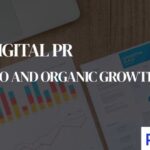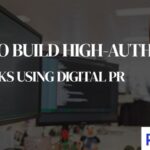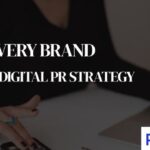
Author Archives: Timothy Carter
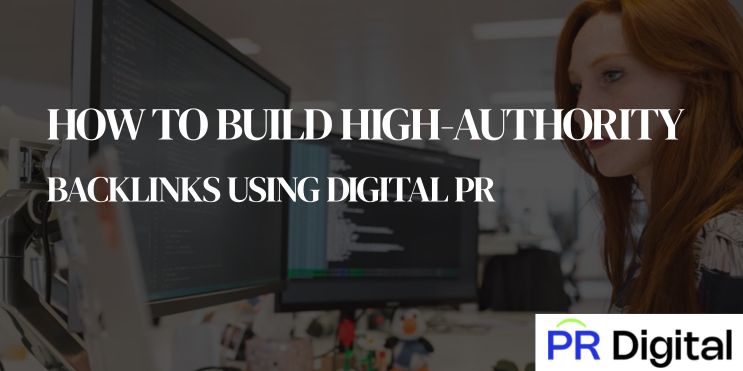
How to Build High-Authority Backlinks Using Digital PR
If you want links that actually move the needle, you need more than a few directory submissions and a prayer. You need stories people cannot resist, assets worth citing, and outreach that makes editors think yes before they even finish your subject line. That is the power of Digital PR, and it is how brands earn the kind of backlinks that search engines treat like standing ovations.
What Makes a Backlink High Authority?
Not all links wear the same crown. A high-authority backlink comes from a site that earns trust through rigorous editorial standards, strong audience engagement, and a history of ranking well. Relevance matters just as much as raw authority.
A link from a respected publication in your niche beats a random inclusion on a general site that covers everything from cat sweaters to cryptocurrency. Context is the third pillar. A link that sits inside a well-written article, surrounded by related terms and natural anchor text, carries more weight than a lonely logo on a partner’s page. Think of it as social proof in search form. The better the company your brand keeps, the more credible it becomes.
Find the Stories Editors Want to Publish
Strong links come from strong stories. Journalists do not wake up craving your product page. They wake up looking for timely data, surprising angles, and arguments that make readers pause mid-scroll.
Before you pitch anything, research the conversation you want to join. Study the headlines, the questions readers are asking, and the gaps left open by yesterday’s coverage. Your idea should ride a current, not swim against it. If your angle feels inevitable, you are on the right track.
The most consistent way to reach inevitability is to tie your expertise to something bigger than your brand. Use your vantage point to reveal patterns that others cannot see. Even a simple question can become a compelling story when you back it with credible data and explain why it matters now.
Audience and Journalist Overlap
Great link campaigns sit at the sweet spot where your audience’s curiosity meets a reporter’s beat. Maps that overlap. If your customers care about budget anxieties and a certain desk covers consumer trends, design research that illuminates cost pressures with fresh numbers and clear stakes. Editors do not buy pitches. They buy evidence that their readers will care.
Data Sources That Travel
The best stories travel because they are portable. Government datasets, industry surveys, anonymized user trends, and public filings can all supply raw material. Your job is to transform raw inputs into clean, attributable insights. Show your work, publish a methodology, and keep your numbers tidy. If someone challenges a figure, you should be able to recreate it before your coffee cools.
Plan Campaigns With a Strong Hook
Hooks answered the silent question, why today. News cycles reward urgency and novelty, so frame your story with a time peg, a seasonal pattern, or a counterintuitive finding. A hook is not clickbait. It is the shortest path to the truth of your piece. If the first sentence of your pitch forces a raised eyebrow, you are close. If it reads like beige wallpaper, sharpen it.
| Factor | What It Means | Best Practices |
|---|---|---|
| Authority | Links from sites with strong editorial standards, high trust, and proven rankings. | Target respected publications in your niche; prioritize quality over quantity. |
| Relevance | Backlinks that align with your industry, audience, and content themes. | Pursue industry-specific media, blogs, and vertical outlets instead of general directories. |
| Context | Placement within meaningful, related content (not just a logo or footer). | Secure in-article mentions surrounded by natural anchor text and semantically related terms. |
| Storytelling | Strong narratives and data-driven insights that reporters want to share. | Pitch timely, surprising angles backed by original data or unique expertise. |
| Data | Credible research and numbers that give journalists proof points. | Use surveys, public datasets, or proprietary research; publish clear methodology. |
| Visual Assets | Charts, maps, and graphics that are easy to embed and cite. | Provide mobile-friendly visuals with captions, alt text, and light branding. |
| Outreach | Precision pitching to the right journalists with respectful follow-ups. | Personalize pitches, keep them short, lead with insights, and avoid pushy tactics. |
| Timing | Releasing content when it aligns with news cycles, seasons, or trending stories. | Tie studies to timely events; be fast but accurate when responding to breaking news. |
| Measurement | Tracking authority, referral traffic, rankings, and conversions from campaigns. | Log links, monitor metrics over time, and adjust strategy based on results. |
Structure the full campaign before you build anything. Identify your primary claim, the supporting stats, the quotes you will offer, and the visuals you will provide. Plan where the research will live, how you will attribute sources, and how you will provide downloadable assets for easy citation. The fastest way to lose a link is to make citation a chore.
Create Assets Reporters Love To Cite
Great coverage starts with great packaging. Your research deserves a home that is easy to scan, credible at a glance, and delightful to explore. Break the story into sections that mirror how a journalist writes: headline-worthy findings, concise context, and charts that survive copy-and-paste without drama. Use clean headings, descriptive figure captions, and a dedicated press note that summarizes the most quotable points.
Original Data Beats Opinions
Opinions rarely earn links on their own. Original numbers do. Whether you run a proprietary survey or analyze public databases, make the methodology clear and the sample defensible. Explain how you collected data, the time period, and any exclusions. Precision builds trust, and trust earns citations.
Visuals That Invite Embeds
Visuals are your quiet sales team. Static charts, simple maps, and tables that render well on mobile invite embeds and links. Choose formats that load quickly, include alt text, and carry your brand lightly. If a graphic takes ten seconds to make sense, it will not survive a busy editor’s tab purge.
Pitch With Precision and Courtesy
Spray-and-pray outreach wastes goodwill. Target specific writers who cover your topic, and reference their recent work with care. Keep the subject line crisp, the first sentence irresistible, and the email short enough to read during a coffee line. Lead with the insight, not your brand. Offer embargo options, quotes from a named expert, and a fast path to your primary chart.
Courtesy scales better than pressure. A polite follow-up a few days later is fine. A guilt-laced third email is not. If someone passes, thank them and move on. Editors remember the people who make their jobs easier. They also remember the ones who do not.
Time Your Outreach for Maximum Traction
Timing can be the difference between a front-page feature and an unnoticed post. Watch editorial calendars, seasonal spikes, and regular reporting rhythms. A back-to-school cost study lands in late summer. A travel trend report hits before peak booking windows. When a relevant news story breaks, update your data and offer a fast quote that clarifies the moment. Speed helps, but speed without accuracy is a mess. Always verify before you send.
Measure Results and Iterate
Track the outcomes like a scientist. Monitor the number of linking domains, the authority and relevance of each site, anchor text patterns, and the referral traffic that follows. Tie those metrics to business outcomes. Did rankings for target pages improve? Did organic conversions rise? Did branded search volume tick up. Links are a means, not an end. If a campaign earns attention but not results, adjust your topics, sources, or packaging.
Attribution can be messy, so set expectations early. Some links appear quickly, others arrive weeks later as secondary coverage rolls in. Keep a log of pitches, responses, and publication dates. Over time, you will see which beats respond to which hooks, and which formats consistently earn embeds.
Avoid Common Pitfalls
A few traps swallow even seasoned teams. The first is thin data that crumbles on contact. If your sample size cannot support your claim, the story will not hold. The second is vanity framing. If the primary takeaway is that your product is great, no one cares.
The third is a messy presentation. Walls of text, fuzzy charts, and broken mobile layouts kill otherwise solid research. Finally, do not overreach on conclusions. Let the numbers speak and keep the commentary calm. Credibility compounds.
Another frequent pitfall is neglecting the legal and ethical side. Do not use data you do not have the right to use. Do not reveal anything sensitive. If you weigh or clean a dataset, say so. Transparency is not only ethical, it is persuasive.
Build Momentum for the Long Term
The most successful programs look like compounding interest. Publish a flagship study on a predictable cadence. In between, release smaller updates, quick polls, and focused analyses that keep your name in the conversation. Build relationships with reporters before you need them. Share notes that help them, even when there is nothing in it for you. When you finally send a pitch, you will feel the difference.
Reuse and remix responsibly. A single dataset can support several stories if you slice it by region, demographic, or outcome. Just avoid repeating yourself. Each angle should feel distinct, and each page should stand on its own. Treat every asset like a newsroom would treat a beat: consistent, reliable, and always inching the story forward.
Conclusion
Earning high-authority backlinks is not magic, and it is definitely not luck. It is the predictable result of useful research, thoughtful packaging, and respectful outreach. Find the story your audience cares about, tell it with real data, and hand editors everything they need to share it. Keep at it, measure what matters, and your brand will collect links the way a great article collects readers, one solid, credible citation at a time.
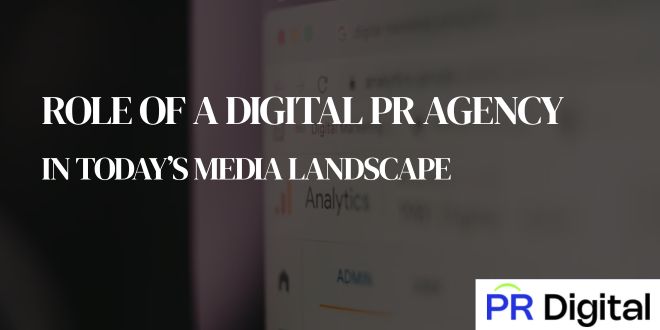
The Role of a Digital PR Agency in Today’s Media Landscape
Digital PR sits at the intersection of classic media relations, content marketing, and search-engine savvy. In an era where a single tweet can steer public sentiment and an earned backlink can lift search visibility overnight, brands increasingly lean on specialized Digital PR agencies to stay visible, credible, and relevant.
Navigating a Shifting Media Ecosystem
The media world no longer revolves around newspaper mastheads and nightly newscasts. News outlets now break stories on social platforms, niche bloggers command loyal audiences, and podcasts rival traditional radio in reach. In this fluid environment, a Digital PR agency functions as both cartographer and tour guide—mapping the landscape and steering clients toward the most strategic touchpoints.
From Press Releases to Multimedia Storytelling
Press releases still have their place, but static text alone rarely captures attention for long. Modern Digital PR pros craft story packages that may include:
- A snappy Instagram Reel or TikTok clip
- An embeddable infographic designed for quick social sharing
- A long-form expert article for thought-leadership platforms
- Interactive data visualizations to give journalists ready-made assets
Blending formats allows a single narrative to travel further and speak fluently to the medium in which it appears.
The Power of Online Earned Media
Earned media—coverage you don’t pay for—remains the gold standard for credibility. What’s changed is the range of voices that matter. When a respected Reddit moderator, industry newsletter writer, or micro-influencer endorses a brand, search engines notice as much as humans do. Digital PR practitioners cultivate these relationships and pitch angles tailored to each outlet’s style, thereby expanding brand reach beyond the traditional press pool.
What Sets a Digital PR Agency Apart
A marketing department can send a press release and an ad agency can buy impressions, but Digital PR agencies weave those tasks into an always-on feedback loop of data analysis, creative ideation, and targeted outreach.
Data-Driven Strategy and Listening
Before drafting a single pitch, agency teams pore over:
- Search trends
- Social chatter
- Backlink profiles
- Competitor mentions
They look for gaps—questions reporters keep asking, keywords competitors ignore, or demographics underserved by existing coverage. This groundwork ensures every campaign addresses an identifiable editorial or audience need.
Integrated Outreach Across Channels
Because journalists and influencers juggle overflowing inboxes, timing and format are everything. A Digital PR specialist might:
- Email a concise data angle to a tech editor
- Follow up with a direct Twitter DM that includes a chart readers can embed
- Syndicate supporting content on LinkedIn and Medium the moment coverage hits
By meeting contacts where they already spend time, agencies increase the odds that a story will land.
SEO: The Silent Partner of PR
A glowing mention loses half its value if it never shows up in search results. Digital PR agencies:
- Optimize anchor text
- Secure high-authority backlinks
- Coordinate with technical SEO teams
This ensures earned coverage boosts domain authority rather than drifting into the algorithmic abyss.
Core Services You Can Expect
While every agency develops its own playbook, most offer a similar menu of deliverables tailored to client goals and budgets:
- Narrative development and key-message architecture
- Media list curation, from top-tier publications to hyper-niche blogs
- Press kit creation, including executive bios, product shots, and brand guidelines
- Campaign ideation—seasonal hooks, newsjacks, proprietary research studies
- Journalist and influencer outreach, both one-to-one and at scale via wire services
- Crisis communication planning and rapid-response support
- Backlink acquisition and on-page SEO alignment
- Performance reporting with dashboards tracking coverage, traffic, and conversions
Newsjacking and Thought Leadership:
One signature Digital PR tactic is “newsjacking”—the art of inserting a brand’s perspective into a breaking news cycle. When executed responsibly, it:
- Positions executives as go-to experts
- Gains high-impact coverage
- Replaces the need for expensive ad campaigns
Complementing this is longer-range thought leadership, including:
- Bylined articles
- White papers
- Conference appearances
These efforts cement authority over months and years—not just news-cycle minutes.
Measuring Impact in Real Time
The days of counting column inches and calling it a win are long gone. Digital PR performance is now measured through a blend of traditional reach metrics and digital analytics.
Metrics That Matter:
- Share of voice: How often your brand is mentioned relative to competitors
- Referral traffic: Click-throughs from earned articles and social posts
- Backlink quality: Domain authority (DA) and topical relevance of linking sites
- Social amplification: Likes, shares, and comments generated by coverage
- Keyword lift: Ranking improvements tied to newly acquired links
- Conversion assists: Contact-form fills or purchases traced back to PR-sourced sessions
By tagging URLs, monitoring social sentiment, and integrating dashboards with CRM systems, agencies tie awareness efforts to concrete business outcomes.
Choosing the Right Partner
No two Digital PR agencies operate identically, so vetting is critical. Look for teams that:
- Show a track record in your vertical—media relationships differ between SaaS and consumer packaged goods
- Demonstrate data fluency—ask to see past reporting frameworks and success stories
- Collaborate comfortably with in-house marketing, SEO, and social departments—silos kill synergy
- Offer senior-level access—seasoned strategists should guide strategy, not just make the sales pitch
- Provide clear onboarding timelines, deliverable lists, and transparent pricing
The modern media ecosystem rewards brands that engage in steady, authentic storytelling backed by real-time analytics. A Digital PR agency brings the mix of creativity, relationships, and technical know-how required to thrive amid constant algorithm changes and 24-hour news cycles. By aligning narrative craft with performance data, these agencies transform publicity from a vanity exercise into a tangible growth driver—turning brand mentions into measurable momentum.

